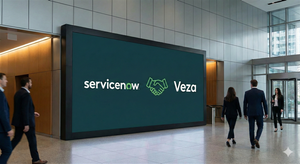Settlement Compression to T+1 Gaining Momentum as Covid Drives Technological Transformation
New study highlights global drive to increase equities settlement efficiency and reduce risk, amidst technological transformation
Settlement compression continues as one of the most pressing issues for the equities post trade industry, with the planned transition to T+1 in the U.S., together with the recent global volatility spikes. A new global study “Securities Services Evolution” by Citi Securities Services, shows that 44% of market participants surveyed expect the prevailing settlement timeframe for equities to be T+1 within the next five years.
The study also found that while the pandemic has accelerated and condensed many existing efficiency and digitization initiatives, it has also given rise to a whole new set of previously unforeseen challenges, including managing through periods of higher volatility. This combination of factors are driving market participants to re-examine how the settlement process could be accelerated and simplified to reduce risk.
“Through extensive dialogue with our partners and clients, it is clear that there is an increased need in the industry to strengthen resilience, reduce risk and costs; and enhance efficiencies,” said Okan Pekin, Citi’s Global Head of Securities Services. “This paper not only highlights the benefits and challenges for a shortened settlement cycle but also the associated emerging technologies and digitalization efforts underway across the industry.”
“Securities Services Evolution” includes quantitative and qualitative data gathered from 15 financial market infrastructures (FMIs) and almost 400 market participants such as banks, broker-dealers, asset managers, custodians and institutional investors across Asia Pacific, Europe, Latin America and North America. Collectively, these insights provide a rare, holistic view into the ongoing developments across the global securities markets ecosystem.
Results showed that FMIs and market participants have opposing views on a number of topics including:
- FMIs see the major benefit of reducing settlement cycles as risk reduction, which will in turn enable lower margin requirements and the release of capital; however 44% of market participants ranked greater efficiency in investment and trading processes as the greatest benefit of a shortened cycle for their respective organizations.
- Most FMIs interviewed did not consider technology as a barrier to settlement compression as they had already undertaken considerable planning and investment in technology during the last transition (from T+3 to T+2). Market participants however had an opposing view, with almost 50% indicating that upgrading legacy technology would be a key factor.
- The greatest challenge to achieving a shortened cycle from a FMI perspective was business process efficiency and alignment, in contrast to market participants of whom only 10% ranked this as a primary key factor. Market participants instead saw cash, funding and liquidity management as the greatest obstacle.
- Most FMIs did not view DLT as necessarily essential for settlement compression, but drew a distinction between T+1 and T+0, only seeing a role for it in the latter. However, 64% of market participants believe a DLT-based market infrastructure would significantly or moderately improve overall market efficiency and reduce cost.
Other key findings include:
- 50% of market participants believe that atomic / immediate settlement would be achievable in the near future (within 5 years) and that emerging technologies such as DLT would be a key factor for enabling this (46%).
- Majority of market participants (57%) would require some investment for additional capability to accommodate any reduction in settlement cycle while only 29% believed that their existing technology would be adequate.
“We need to adapt to seismic shifts across every region by digitally transforming to deliver best-in-class experiences seamlessly across platforms for our clients, at scale,” said Matthew Bax, Global Head of Direct Custody and Clearing at Citi. “We have a deep sense of accountability for our clients, partners and network and are committed to providing post trade services through our network with global consistency.”
With over $30 trillion1 of assets under custody and administration and the industry-leading proprietary network spanning over 60 markets, Citi Securities Services provides clients with extensive on-the ground local market expertise, innovative post-trade technologies, customized data solutions, and a wide range of custody and fund services that can be tailored to meet clients’ needs.
About Citi
Citi, the leading global bank, has approximately 200 million customer accounts and does business in more than 160 countries and jurisdictions. Citi provides consumers, corporations, governments and institutions with a broad range of financial products and services, including consumer banking and credit, corporate and investment banking, securities brokerage, transaction services, and wealth management.
Additional information may be found at http://www.citigroup.com | Twitter: @Citi | YouTube: http://www.youtube.com/citi | Blog: http://blog.citigroup.com | Facebook: http://www.facebook.com/citi | LinkedIn: www.linkedin.com/company/citi.
1] As of Q2 2021. AUC/A figure separately represents gross assets for which Citi provides Global Custody and sub-custodian services via its Direct Custody and Clearing business and includes Issuer Services. Citi previously reported AUC/A numbers on a net basis, therefore discounting assets serviced by both businesses.
View source version on businesswire.com: https://www.businesswire.com/news/home/20211011005129/en/
Contacts
Media:
North America: Nina Das nina.das@citi.com
EMEA: Rekha Jogia-Soni rekha.jogia-soni@citi.com
Asia Pacific: Godwin Chellam godwin.chellam@citi.com
Latam: Alexandra Ravinet Alexandra.ravinet@citi.com
More News
View More




Recent Quotes
View More
Quotes delayed at least 20 minutes.
By accessing this page, you agree to the Privacy Policy and Terms Of Service.